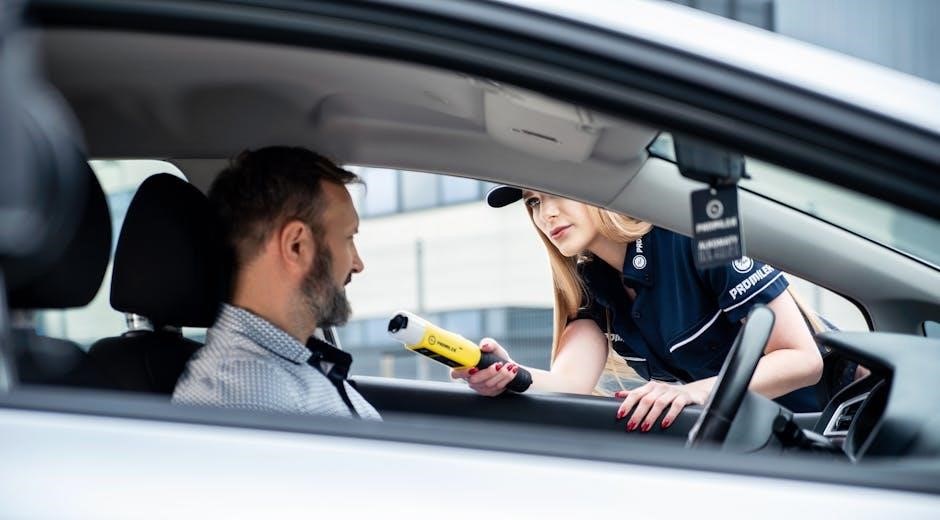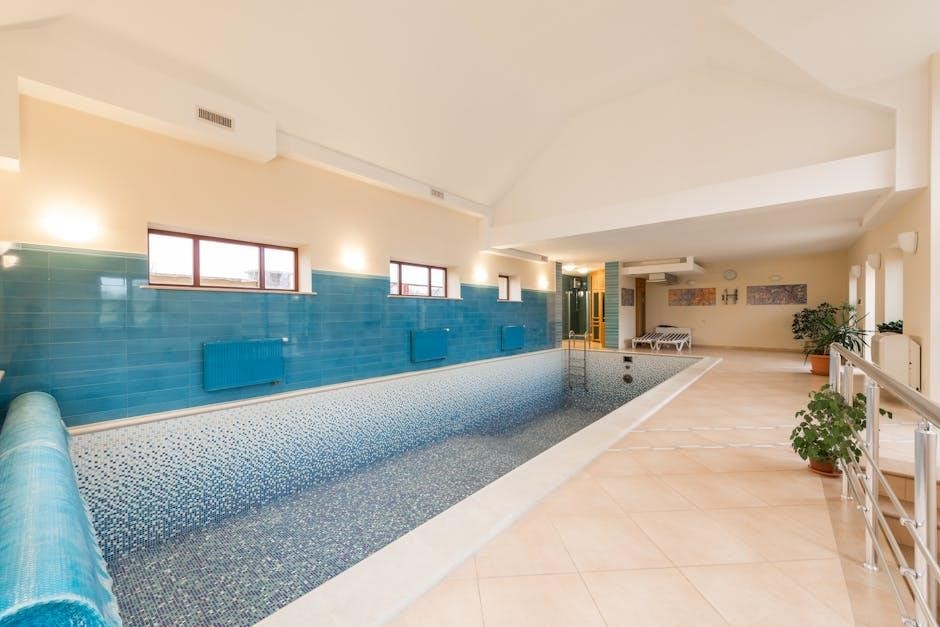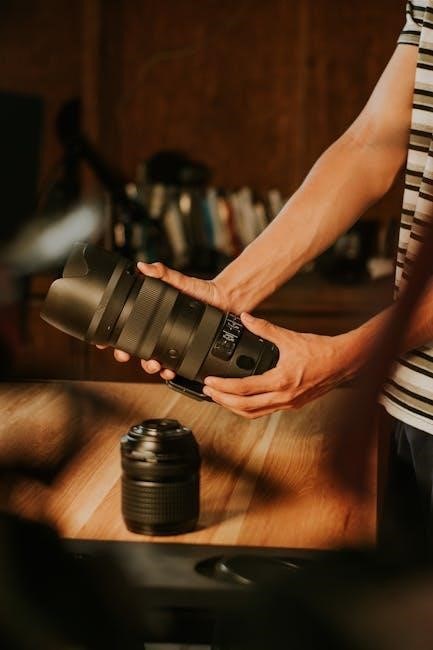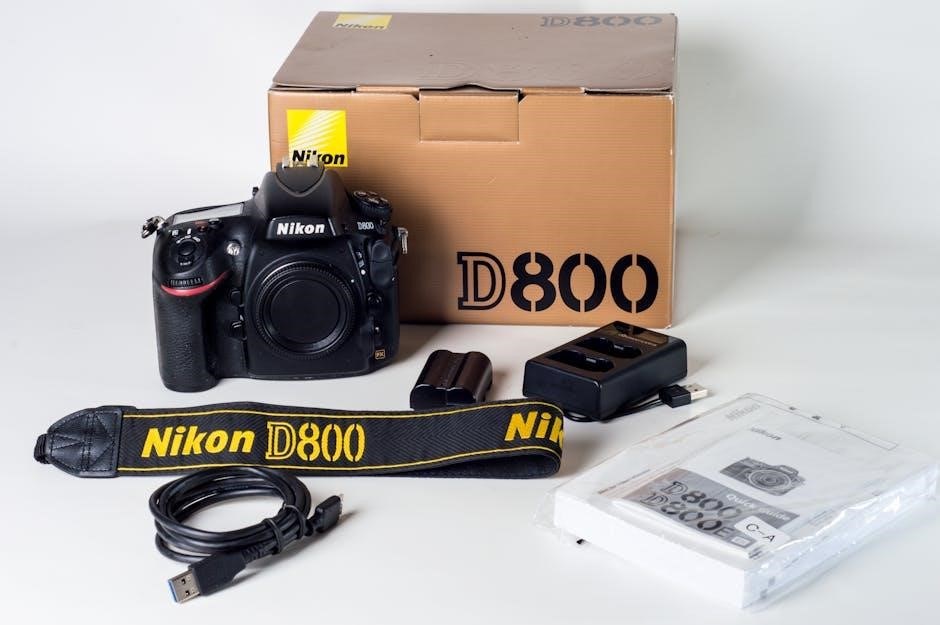Dreams, involuntary mental experiences during sleep, are universally recognized, offering a fascinating window into the subconscious; “In the Dream House” explores these realms.
This memoir uniquely utilizes dreamlike sequences, mirroring the fragmented and often distorted nature of memory, particularly when grappling with difficult experiences.
The exploration of trauma through a non-linear narrative, akin to the logic of dreams, invites readers to consider the complexities of recollection and emotional processing.
The Universal Experience of Dreaming
Dreaming is a fundamental aspect of the human condition, a nightly occurrence experienced across cultures and throughout history. Defined as a succession of images, emotions, and sensations occurring involuntarily during sleep, dreams represent a unique state of consciousness. Regardless of background or belief, individuals universally report experiencing these mental phenomena, solidifying dreaming as a shared human experience.
From ancient interpretations linking dreams to divine messages to modern neurological studies exploring their cognitive functions, the fascination with dreams persists. The content of dreams varies wildly, ranging from mundane reflections of daily life to bizarre and fantastical scenarios. This inherent variability underscores the deeply personal and subjective nature of the dreaming experience, yet the act of dreaming itself remains a common thread connecting all people. It’s a realm where the impossible feels plausible, and the subconscious mind freely expresses itself.
Contextualizing “In the Dream House” ― A Memoir
Carmen Maria Machado’s “In the Dream House” stands as a groundbreaking work of memoir, uniquely challenging conventional narrative structures to depict the complexities of an abusive same-sex relationship. Departing from traditional linear storytelling, Machado employs a fragmented, experimental style, mirroring the disorienting and often illogical nature of trauma and memory.

The memoir is structured around eight distinct “dream houses,” each representing a different facet of the relationship and the insidious ways abuse manifested. This innovative approach allows Machado to explore the emotional landscape of the experience with nuance and honesty, acknowledging the gaps and distortions inherent in recollection. It’s a deliberate attempt to capture the feeling of being trapped within a psychological space, where reality is fluid and perception is skewed, offering a powerful and unsettling reading experience.

Understanding the Science of Dreams
Dreams are mental imagery occurring during sleep, often involuntary, with vivid narratives or sensations; understanding sleep stages illuminates dream occurrences and neurobiological processes.
Stages of Sleep and Dream Occurrence (REM vs. Non-REM)
Sleep progresses through distinct stages, categorized as Rapid Eye Movement (REM) and Non-REM sleep, each influencing dream experiences. Non-REM sleep, encompassing stages 1-3, features progressively deeper sleep, with dreams occurring but often lacking vividness or narrative structure.
Conversely, REM sleep is characterized by heightened brain activity, resembling wakefulness, and is strongly associated with vivid, emotionally charged dreams. During REM, the brain exhibits increased activity in areas linked to emotion, visual processing, and memory consolidation.
The cyclical nature of sleep, transitioning between REM and Non-REM stages, means dreams can occur throughout the night, though REM dreams are typically more memorable. Understanding these stages provides a crucial framework for exploring the relationship between sleep architecture and the content of our dream lives.
Neurobiological Processes During Dreaming
Dreaming involves complex neurobiological processes, with activity shifting from the prefrontal cortex – responsible for logic and reasoning – to more primal brain regions like the amygdala and hippocampus. The amygdala’s heightened activity explains the intense emotionality often present in dreams, while the hippocampus plays a role in memory consolidation.
Neurotransmitters, chemical messengers in the brain, also undergo changes during REM sleep. Acetylcholine levels increase, promoting brain activity, while serotonin and norepinephrine decrease, potentially contributing to the bizarre and illogical nature of dream content.
These neurochemical shifts, coupled with altered brain activity patterns, create a unique state of consciousness conducive to the formation of vivid, often surreal, dream experiences. This interplay illuminates the biological basis of dreaming.
Dream Theories: Freud, Jung, and Modern Perspectives
Sigmund Freud proposed dreams are a “royal road to the unconscious,” representing wish fulfillment through symbolic imagery, often rooted in repressed desires. Carl Jung expanded on this, suggesting dreams access a collective unconscious, filled with archetypes – universal symbols and patterns.
Modern perspectives, like the activation-synthesis theory, posit dreams arise from random brainstem activity during REM sleep, with the cortex attempting to create a narrative from these signals. The neurocognitive theory emphasizes the continuity between waking thought and dream content.
These theories, while differing, highlight dreams’ potential for revealing underlying psychological processes, emotional states, and cognitive functions. Understanding these viewpoints enriches our interpretation of dream experiences.
Common Dream Themes and Symbolism
Recurring dreams often signal unresolved conflicts, while falling, flying, or being chased represent anxieties and a loss of control within the subconscious.
Recurring Dreams: What Do They Signify?
Recurring dreams are not merely repetitions of random neural firings; they are insistent messages from the subconscious, demanding attention and resolution. These dreams often center around unresolved conflicts, anxieties, or traumatic experiences that the waking mind avoids confronting directly.
The persistence of a dream theme suggests an underlying issue that requires processing. The dream isn’t necessarily predicting the future, but rather highlighting a pattern of behavior, emotion, or belief that is causing distress. Ignoring these signals can lead to increased anxiety and emotional stagnation.
Analyzing the specific details within the recurring dream – the setting, characters, and emotions – can provide valuable clues about the nature of the underlying conflict. Dream work, including journaling and reflection, can help to unpack the symbolism and gain insight into the root cause of the repetition. Ultimately, addressing the core issue can lead to the cessation of the dream’s recurrence.
Dreams About Falling, Flying, and Being Chased
Dreams of falling frequently symbolize feelings of insecurity, loss of control, or anxiety about failure in waking life. The sensation of plummeting can represent a fear of letting go or a perceived lack of support; Conversely, dreams of flying often signify a sense of freedom, empowerment, and overcoming obstacles.
However, flying dreams can also indicate a desire to escape from responsibilities or difficult situations. Being chased in a dream is a common manifestation of unresolved conflicts, fears, or guilt. The pursuer often represents a repressed aspect of the self or a perceived threat.
These archetypal dream scenarios tap into universal human experiences and anxieties. Analyzing the specific context and emotions within these dreams can reveal personalized insights into one’s inner world and provide clues for addressing underlying emotional challenges.
The Significance of Dream Characters and Settings
Dream characters rarely represent literal individuals; instead, they often embody aspects of the dreamer’s own personality, unresolved emotions, or symbolic representations of relationships. Identifying with or fearing a character can reveal hidden feelings about oneself or others. Similarly, dream settings are rarely random.
The location, atmosphere, and objects within a dreamscape hold symbolic weight, reflecting the dreamer’s internal state and associations. Familiar places might represent comfort or nostalgia, while unfamiliar settings can signify the unknown or unexplored aspects of the self.
Paying attention to the details of both characters and settings provides valuable clues for interpreting the dream’s overall message. These elements work together to create a narrative that reflects the dreamer’s subconscious thoughts and feelings.
“In the Dream House” and the Exploration of Trauma
“In the Dream House” uniquely portrays abuse through a fragmented, dreamlike structure, mirroring the disorienting effects of trauma on memory and perception.
The Memoir’s Unique Narrative Structure
“In the Dream House” deliberately eschews a traditional, linear narrative, instead employing a fragmented and unconventional structure that mirrors the elusive and often distorted nature of traumatic memory.

This approach, heavily influenced by the author’s exploration of dream logic, presents events not chronologically, but as recurring motifs, sensations, and fragmented recollections.
The memoir is divided into sections named after dream concepts – “House,” “Velocity,” “Darkness” – further emphasizing this connection and signaling to the reader that a conventional storytelling approach is not being utilized.
This structural choice isn’t merely stylistic; it’s fundamentally tied to the difficulty of articulating experiences of abuse, where clear, coherent narratives are often impossible to construct due to the psychological impact of trauma.
The repetition and circling back to certain images and phrases create a sense of being trapped, mirroring the feeling of being stuck within a traumatic experience, and forcing the reader to actively participate in piecing together the narrative.
Using Dreamlike Imagery to Depict Abuse
“In the Dream House” masterfully employs dreamlike imagery not as mere stylistic flourish, but as a crucial method for depicting the insidious and often disorienting nature of abusive relationships.
The author utilizes surreal and symbolic representations – the “dream house” itself being a central metaphor – to convey experiences that are difficult to articulate directly due to their emotional complexity and the silencing effects of trauma.
This approach allows for the exploration of power dynamics, control, and emotional manipulation through evocative descriptions of atmosphere, sensation, and fragmented scenes, rather than explicit recounting of events.
The dreamlike quality also reflects the way trauma can distort memory, creating a sense of unreality and making it challenging to establish a clear, objective account of what occurred.
By embracing ambiguity and relying on the reader’s interpretive abilities, the memoir powerfully conveys the subjective and deeply unsettling experience of abuse.
The Role of Memory and Distortion in Trauma Narratives

“In the Dream House” profoundly illustrates how trauma fundamentally alters memory, rendering it fragmented, unreliable, and subject to distortion. The memoir’s non-linear structure directly reflects this fractured experience of recollection.
Traditional narrative expectations of chronological order and complete recall are deliberately subverted, mirroring the way traumatic memories often surface as disjointed images, sensations, and emotional echoes.
The author acknowledges the inherent difficulties in reconstructing the past accurately, recognizing that memory is not a perfect recording but a reconstructive process influenced by emotion and subsequent experiences.
This deliberate embrace of ambiguity and uncertainty challenges the reader to confront the limitations of narrative and the complexities of bearing witness to trauma.
The memoir powerfully demonstrates how distortion isn’t a flaw in the remembering, but an intrinsic part of the trauma’s lasting impact.

Analyzing Symbolism Within the Memoir

“In the Dream House” employs potent symbolism, with recurring motifs and sensory details evoking deep emotional states, revealing psychological impacts of abuse.

The “Dream House” as a Metaphor
The titular “Dream House” transcends a literal location, functioning as a complex and layered metaphor for the abusive relationship at the memoir’s core. Initially presented as a space of potential safety and idyllic domesticity, it quickly unravels, mirroring the deceptive facade constructed by the abuser.
This house embodies the illusion of a perfect life, masking the insidious control and emotional violence occurring within its walls. The dreamlike quality of the house itself reflects the distorted reality experienced by the narrator, where boundaries are blurred and perceptions are manipulated. It represents a space where trauma is both enacted and concealed, a prison disguised as a sanctuary.
The house’s instability and shifting nature symbolize the narrator’s own fractured sense of self and the precariousness of their emotional state. Ultimately, the “Dream House” becomes a potent symbol of the insidious nature of domestic abuse and the difficulty of escaping its grasp.

Recurring Motifs and Their Psychological Impact
“In the Dream House” masterfully employs recurring motifs – fragmented mirrors, shifting landscapes, and pervasive silences – to amplify the psychological impact of the abuse. Mirrors symbolize the narrator’s fractured self-perception, constantly distorted by the abuser’s gaslighting and control, reflecting a broken identity.
The unstable landscapes mirror the emotional turmoil and lack of solid ground in the relationship, creating a sense of disorientation and unease. Silences, perhaps the most potent motif, represent the unacknowledged abuse, the unspoken truths, and the narrator’s internal suppression of trauma.
These repeated elements aren’t merely stylistic choices; they actively recreate the feeling of being trapped in a cyclical pattern of abuse, highlighting the insidious and repetitive nature of the trauma and its lasting psychological effects on the narrator’s mind.
The Use of Sensory Details to Evoke Emotional States
Carmen Maria Machado’s “In the Dream House” powerfully utilizes sensory details – not to create a realistic depiction, but to evoke the raw emotional states associated with trauma and abuse. The memoir frequently focuses on tactile sensations: the feeling of being watched, the weight of silence, the coldness of a touch, all contributing to a pervasive sense of dread and vulnerability.
Visual imagery is often distorted or fragmented, mirroring the narrator’s fractured perception of reality. Sounds, or the lack thereof, are equally significant, emphasizing the isolating nature of the abuse and the difficulty of articulating the experience.
Machado’s deliberate deployment of these sensory details bypasses logical understanding, directly accessing the reader’s emotional core and replicating the visceral impact of the trauma itself.
Dreams as a Tool for Processing Trauma
Dreams offer a therapeutic space to revisit and reframe traumatic experiences, potentially reclaiming agency and fostering healing through symbolic representation and emotional release.
The Therapeutic Potential of Dream Analysis
Dream analysis, rooted in psychodynamic theories, posits that dreams are not random but rather expressions of unconscious desires, fears, and unresolved conflicts; this is particularly relevant when considering trauma narratives.
Exploring dream content—images, symbols, and emotional tones—can provide valuable insights into the individual’s internal landscape, offering a pathway to understanding and processing difficult experiences.
Within the context of trauma, dream analysis can help individuals confront and integrate fragmented memories, challenge distorted beliefs, and develop coping mechanisms.
By bringing unconscious material into conscious awareness, dream work can facilitate emotional regulation, reduce symptoms of anxiety and depression, and promote a sense of wholeness.
Furthermore, the symbolic language of dreams can bypass the limitations of verbal expression, allowing individuals to access and articulate experiences that may be too painful or overwhelming to directly confront.
How Dreams Can Help Reclaim Agency
Trauma often involves a profound loss of control and agency, leaving individuals feeling powerless and disconnected from their own experiences; dreams offer a unique space to begin reclaiming that agency.
Within the dream world, individuals can experiment with different responses to traumatic events, explore alternative scenarios, and challenge the narratives imposed by the abuser.
Dream work can empower individuals to rewrite their stories, assert their boundaries, and envision a future free from the constraints of the past.
By actively engaging with their dreams—through journaling, interpretation, or creative expression—individuals can cultivate a sense of self-authorship and reclaim ownership of their narratives.
This process of reclaiming agency is crucial for healing and recovery, enabling individuals to move forward with greater confidence, resilience, and self-determination.
Connecting Dream Work to Healing and Recovery
Integrating dream analysis into a broader therapeutic approach can significantly enhance the healing process, particularly for individuals navigating trauma as depicted in memoirs like “In the Dream House”.
Dreams provide a safe and symbolic space to process unresolved emotions, confront difficult memories, and explore the psychological impact of abuse without re-experiencing the full intensity of the trauma.
By understanding the symbolism and narratives within their dreams, individuals can gain valuable insights into their inner world and identify patterns of thought and behavior that may be hindering their recovery.
This self-awareness empowers individuals to challenge negative self-beliefs, develop healthier coping mechanisms, and cultivate a stronger sense of self-compassion.
Ultimately, dream work facilitates a journey towards wholeness, integration, and lasting emotional well-being.















































































